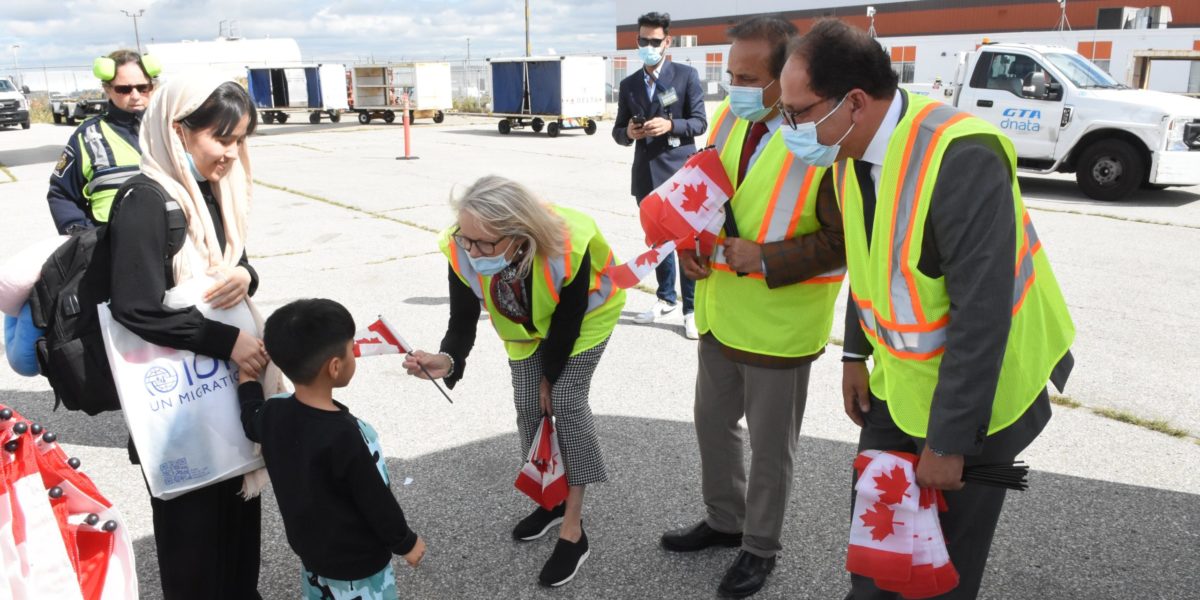Statistics Canada has released census data on immigration and migration, revealing that nearly one quarter of the country’s population is made up of immigrants.
Canadian census data shows more than 8.3 million people were at one point a landed immigrant or permanent resident in Canada, making up the largest proportion since Confederation and the highest among the G7.
Previously released 2021 census data concluded that the average age of Canadians is increasing and that fertility rates are below replacement levels. With the latest release on immigration, it’s clear immigration is leading the population growth in Canada.
At its current pace, Statistics Canada estimates that immigrants could represent between one-in-three and one-in-four Canadians by 2041.
Census data shows that more than 1.3 million new immigrants permanently settled in Canada from 2016 to 2021, representing a record of recent immigrants ever recorded in a Canadian census. Remarkably, the number of immigrants from the same time period who call Atlantic Canada home has nearly tripled since 2006.
While immigration rates among Europeans declined (61.6 per cent in 1971 to 10.1 per cent in 2021), Asia remained the continent of birth for nearly two-thirds of recent Canadian immigrants. Nearly one-in-five recent immigrants were born in India.
The record-breaking immigration numbers between 2016 and 2021 were even more impressive considering fewer immigrants were admitted into Canada in 2020 because of COVID-19 pandemic lockdown restrictions.
While data shows that the vast majority (93 per cent) of recent immigrants can conduct a conversation in English or French, more than 450 languages were reported as mother tongues on the census. Looking to the future, Statistics Canada highlighted the fact that nearly one-third of all children in Canada have at least one parent born abroad.
Census data also shows that more than 218,000 new refugees were admitted as permanent residents between 2016 and 2021 who remain in Canada. Nearly 61,000 of recent refugees migrated from Syria, compared to 27,000 refugees admitted between 2011 and 2016.
Over 15,000 refugees came from Iraq with another 14,000 from the East African country of Eritrea. Rounding out the top five most common countries of birth for new refugees were Afghanistan with 9,500 and Pakistan with 7,800.
According to Statistics Canada, nearly 85,000 immigrants were recognized by the federal government as protected persons, becoming permanent residents during the census period.
Hundreds of millions will be displaced by 2050: WHO
The latest data on Canada’s immigrants, migrants and refugees comes as the World Health Organization (WHO) looks at the social determinants of health and health outcomes associated with seeking refuge and asylum.
Released in July, their unprecedented report marks the first time the WHO has relied on global evidence to release findings about the health status of those who have been displaced from their homes, communities, and often, their countries.
According to the WHO, not only are more refugees and migrants on the move than ever before, but migrants are also facing poorer health outcomes than residents of their host countries.
The central recommendation of the report is the need for health care systems to innovate and adapt around the world to ensure “they are refugee- and migrant-sensitive and inclusive.”
While the report is groundbreaking in documenting health effects facing refugees and migrants worldwide, the WHO noted that evidence “remains fragmented,” adding that more comprehensive data is necessary to track progress toward health-related United Nations Sustainable Development Goals, which has a target date of 2030.
According to the WHO, 2022 marked the first time that more than 100 million displaced people are seeking refuge around the world, particularly due to the war in Ukraine.
“Every eighth person on the planet is a migrant or displaced, and the numbers are growing,” the report begins. “It is predicted that over 200 million additional people will be forced to move by 2050.”
According to the United Nations High Commissioner for Refugees (UNHCR), more than 82 million people were “forcibly displaced worldwide” at the end of 2020. Of those, 34.5 million people were refugees, asylum seekers, and Venezuelan migrants.
One important factor the report explored that has seemingly gone under the radar in mainstream reporting is the fact that migration doesn’t just affect the people who move—it also affects their family, friends, and community who remain in their country of origin. The report concluded that nearly 200 million family members of migrant workers are left behind.
Looking at the mental health and wellness of refugees and migrants, one of the primary concerns is what experts call “care drain” in their communities of origin.
“Migration of individuals to high-income countries to undertake care jobs for the host population can create a care deficit for their own families, especially for children and older people,” the report reads. “More research is needed to understand the health effects on family members who are left behind.”




